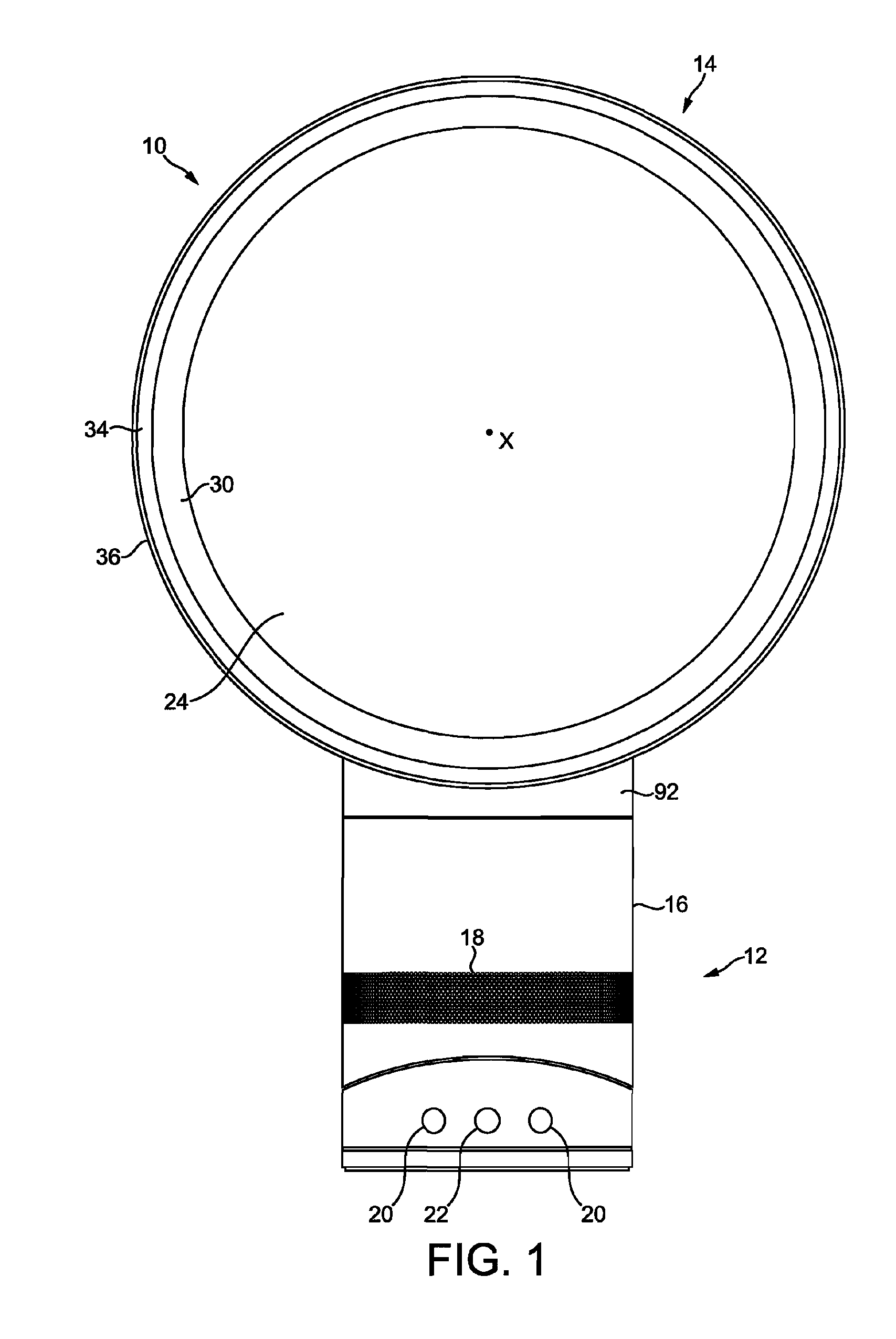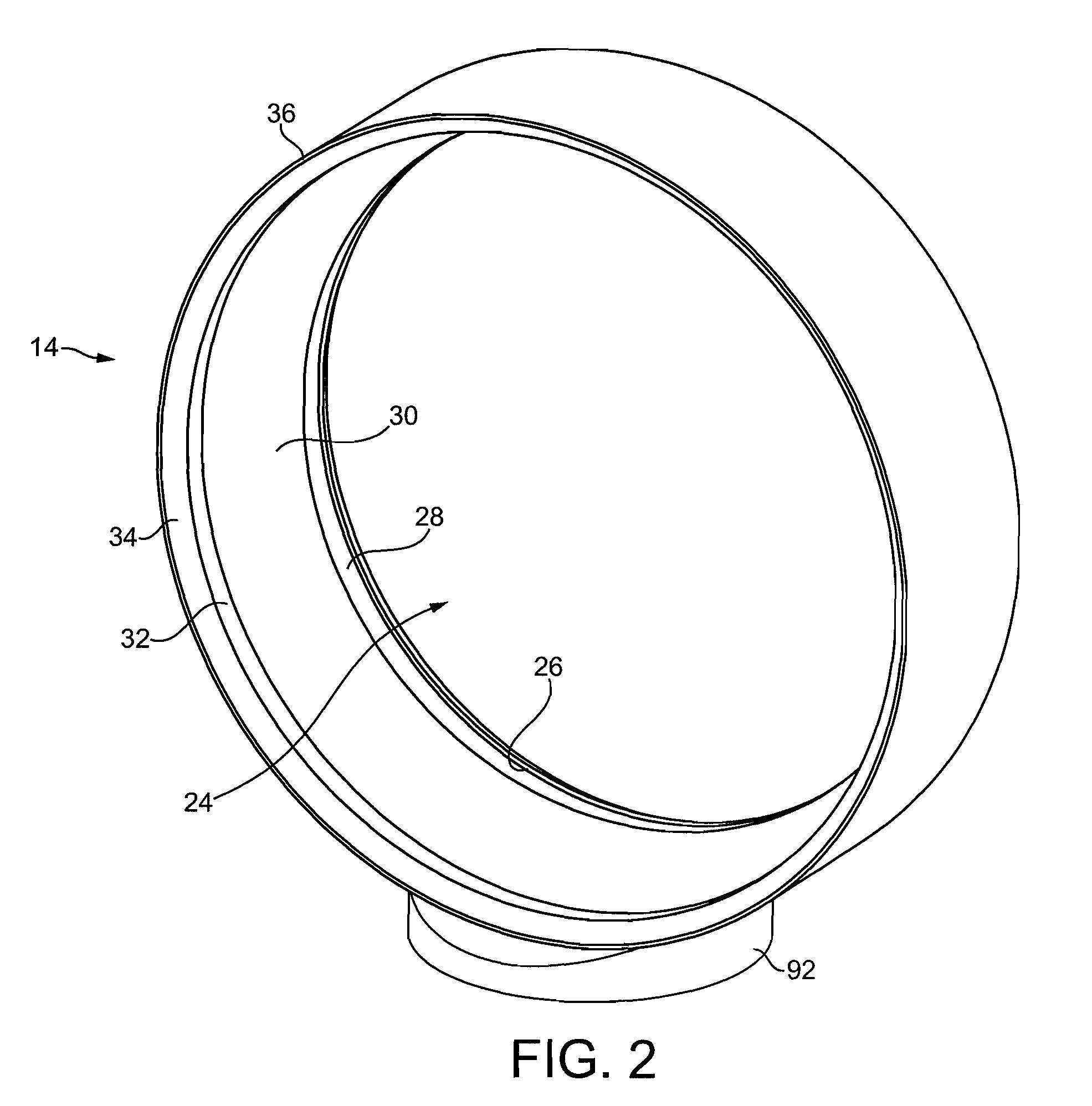Fan assembly
a technology of fan assembly and rotating blades, which is applied in the direction of liquid fuel engines, vessel construction, marine propulsion, etc., can solve the problems of uneven or choppy air flow, uncomfortable for users, and general uneven air flow produced by rotating blades, and achieve the effect of efficient travel and loss of energy and velocity to turbulen
- Summary
- Abstract
- Description
- Claims
- Application Information
AI Technical Summary
Benefits of technology
Problems solved by technology
Method used
Image
Examples
Embodiment Construction
[0054]FIG. 1 is a front view of a fan assembly 10. The fan assembly 10 is preferably in the form of a bladeless fan assembly comprising a stand 12 and a nozzle 14 mounted on and supported by the stand 12. The stand 12 comprises a substantially cylindrical outer casing 16 having a plurality of air inlets 18 in the form of apertures located in the outer casing 16 and through which a primary air flow is drawn into the stand 12 from the external environment. The stand 12 further comprises a plurality of user-operable buttons 20 and a user-operable dial 22 for controlling the operation of the fan assembly 10. The stand 12 preferably has a height in the range from 200 to 300 mm, and the outer casing 16 preferably has an external diameter in the range from 100 to 200 mm. In this example, the stand 12 has a height h of around 190 mm, and an external diameter 2 r of around 145 mm.
[0055]With reference also to FIG. 2, the nozzle 14 has an annular shape and defines a central opening 24. The noz...
PUM
 Login to View More
Login to View More Abstract
Description
Claims
Application Information
 Login to View More
Login to View More - R&D
- Intellectual Property
- Life Sciences
- Materials
- Tech Scout
- Unparalleled Data Quality
- Higher Quality Content
- 60% Fewer Hallucinations
Browse by: Latest US Patents, China's latest patents, Technical Efficacy Thesaurus, Application Domain, Technology Topic, Popular Technical Reports.
© 2025 PatSnap. All rights reserved.Legal|Privacy policy|Modern Slavery Act Transparency Statement|Sitemap|About US| Contact US: help@patsnap.com



